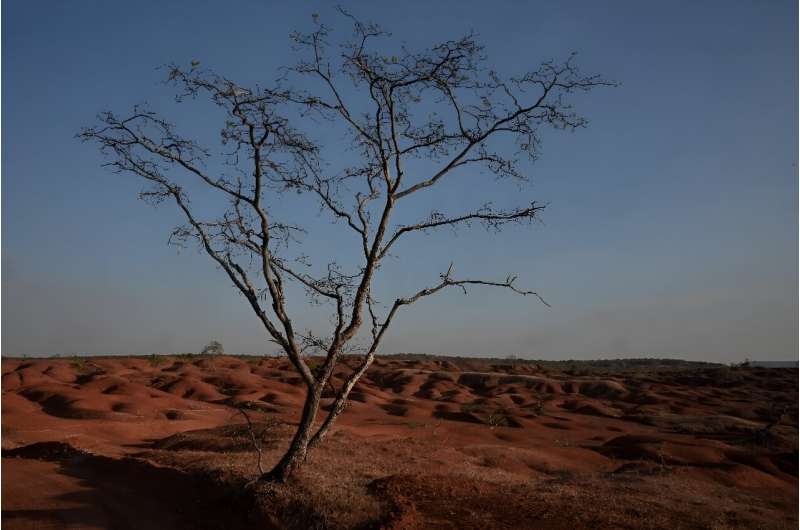
Standing amid a terrain of rugged red craters that looks like something from Mars, Brazilian farmer Ubiratan Lemos Abade extends his arms, pointing to two possible futures for this land fast turning to desert.
Abade, a 65-year-old cattle rancher, lives in Brazil’s worst desertification hotspot: Gilbues, in the northeastern state of Piaui, where a parched, canyon-pocked landscape is swallowing up farms and residences, claiming an area bigger than New York City.
Experts say the phenomenon is caused by rampant erosion of the region’s naturally fragile soil, exacerbated by deforestation, reckless development and probably climate change.
Seen from the sky, the “Gilbues desert” looks like a giant sheet of crumpled, brick-red sandpaper.
Its erosion problem isn’t new. The name “Gilbues” likely comes from an Indigenous word meaning “fragile land,” says environmental historian Dalton Macambira, of the Federal University of Piaui.
But humans have made the problem worse by razing and burning vegetation whose roots helped secure the silty soil, and by over-taxing the environment as Gilbues has grown to a town of 11,000 people, he says.
Gilbues was the scene of a diamond-mining rush in the mid-20th century, a sugarcane boom in the 1980s and is now one of the biggest soybean-producing counties in the state.
“Where there are people, there’s demand for natural resources,” Macambira says.
“That accelerates the problem, by demanding more of the environment than it can sustain.”